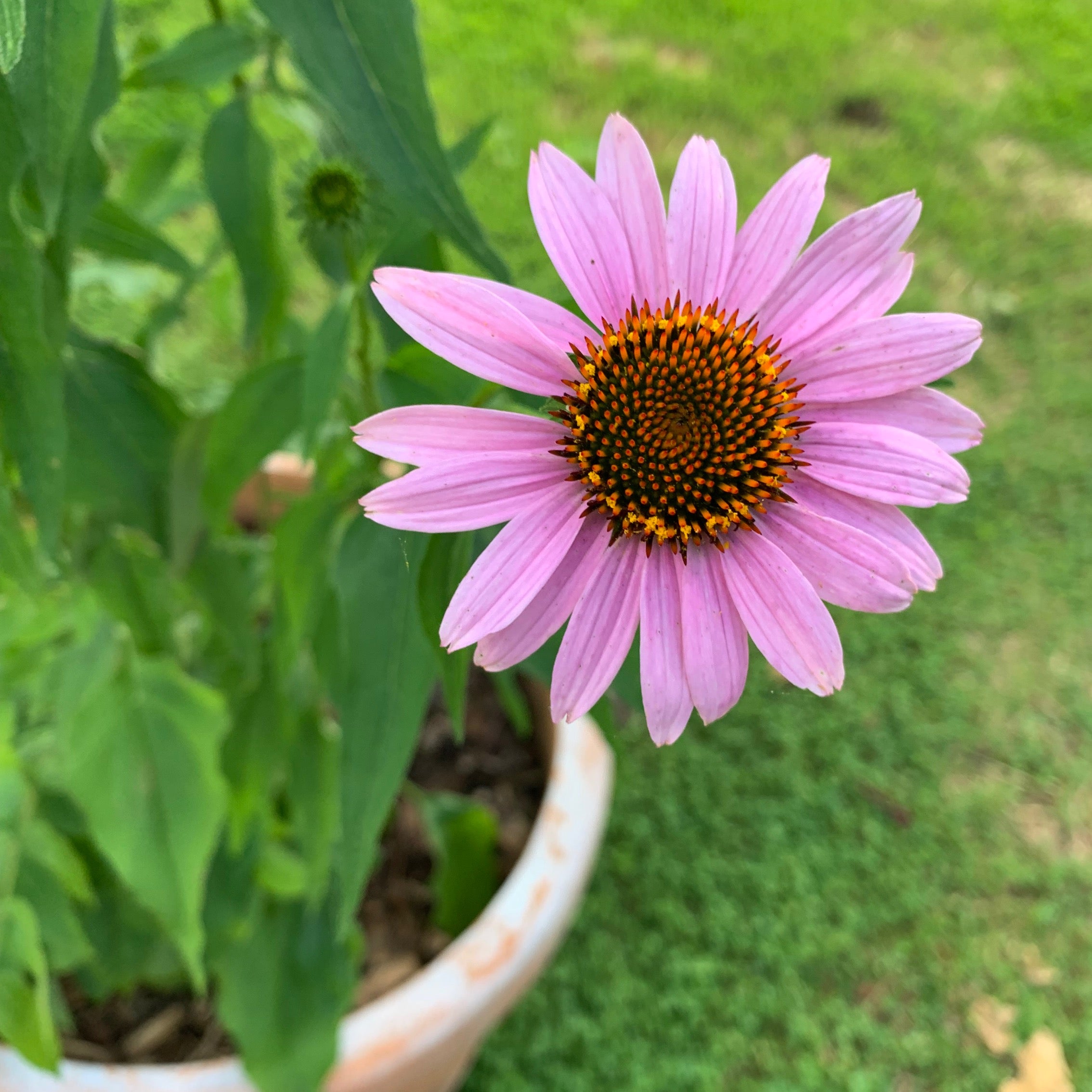We're three months removed from The Great Remediation, and though it's been a hard go of it, I can safely say we're well on the other side of it. For a few weeks now all of our plants have been in the ground and we've been able to enjoy the beginning of the slow process of bringing our yard back to life.

Our barnyard / empty back yard. April 2019.
It was a slow start. In Spring, when I should have been pruning and planting fun beds of annuals and watching the first blooms come to life, I was just hoping that we sprouted grass. It has difficult walking through the neighborhood and seeing yards peaking with color while my own was just trying to show its first signs of basic life. It made me anxious; it also made me realize how much of my own identity I wrap up in my blooming butterfly bushes and rowdy zinnias. Personal reminder: I'm a whole person, even without my plants.
But slowly - slowly but surely - our yard began to grow. She was just a late bloomer, but once she got started, she has shown no signs of stopping.
The first thing to do was simply wait for the grass to grow. Once our dirt was replaced, it was standard to have it covered with sod, which I opted out of. It was one of the weirdest conversations of my life.
"And then when we're done, we'll bring in new sod," he said.
"I don't want sod," I replied.
"Oh, ok. What do you want?" he asked, puzzled.
"Weeds."
"Weeds?" He looked at me like I was joking.
"Yes. Weeds." I was not joking.
Because I love a good, weedy Southern yard, filled with chickweed and plantains and violets and Creeping Charlie. So we opted to seed with white clover and vowed to call in the birds (to help us seed with everything else).
Why white clover? Well, it's a beautiful weed, but also because it helps enrich the soil. We assumed the topsoil we'd receive would not be the richest we've ever seen, and clover puts nitrogen into the soil, an important nutrient for healthy plants. And it's wonderful for pollinators. #savethebees
So, for a few weeks our lawn looked like a barn yard, dirt covered with hay that protected the baby clover seeds. Beyond the clover, we threw handfuls of sunflower seed everywhere, to both call in those birds and to give us something pretty to look at, hopefully one day very soon.
And that day arrived. Our lawn is now a luscious field of clover (or, as I've been calling it, our clover forest), with a few other weeds interspersed, of course. And we're letting it grow wild.

Baby clover sprouting in the hay. May 2019.
Sunflowers have also bloomed. We were surprised at how few made it; it seems they were more affective at calling in the birds and squirrels. And so has many other things: our new hydrangeas, a pot of echinacea, Thumbelina zinnias, and my dearly beloved roses.

Sunny sunflowers. June 2019.

Echinacea and green grass! May 2019.
But it's not all sunshine and daisies. We were right about the poor topsoil (but we can't be mad about it, because at least it's not filled with poisonous lead). Almost everything we've planted straight into the ground is not seeing much growth, though some more than others. We may have to replace a quarter of what we've planted with new plants in the coming months, mostly herbs in my herb garden. But as we expected as much, we're fine dealing with it.

The almost-gone rosemary. May 2019.
And, to note, we had a couple of casualties that were long and slow and hard to bare. A rosemary bush that had traveled with us for many years found its end during the turmoil of it all. We potted it in the front yard when we moved in; it had since rooted itself into the ground through the pot. Moving it to scrape the ground underneath was too much for it to handle. Watching it slowly die was my least favorite thing out of this whole ordeal, but if that's the worst we got, then I will be grateful for that.
The other casualty is a Seven Sisters rose that I propagated from a clipping a few years ago. And, to be honest, it's not a full-on casualty yet. I'm still holding out that it makes a recovery. Fingers crossed!

Backyard before + after: less than 3 months of growth. April 2019 vs July 2019.

Our first tomatoes and raspberries of the season. June 2019.
Happily, other things are going really well in our yard. Our raised vegetable garden is doing its job, and is already giving us our first harvests of peppers, tomatoes, and cucumbers, and we're delighting in an occasional raspberry. We've also allowed some volunteers take root: a squash or pumpkin (we kept one of about 30 volunteers from some happy compost), a thyme bush, and something we suspect is a potato.
So, even though we endured a season of what-have-we-done with some mis-guided anxiety assuming our yard would be dead forever, we've been quite pleased with how well our yard has bounced back. And we've vowed to allow it to grow up a wild child, at least for now.


